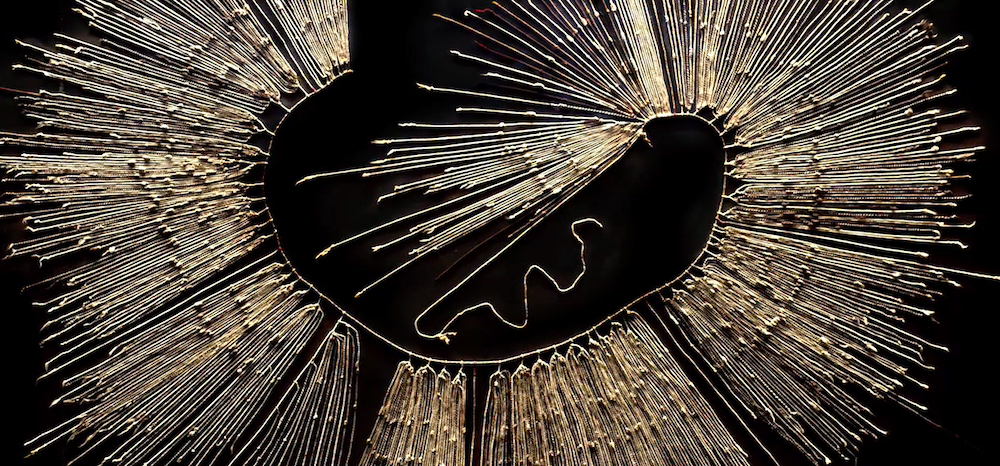How The Inca Used Knots To Tell Stories
Silvia Ferrara on Quipu, the Ancient Technique of Communicating With Cord
The Inca are most often remembered not
for what they had but for what they didn’t have: the wheel, iron, a
written language. This third lack has given rise to a paradox, the Inca
paradox. Could it be that the largest pre-Columbian empire in the
Americas existed without a jot of linguistic notation? Could someone
have created the magnificence of Machu Picchu without a single sign to
describe its beauty?
The answer is yes, it’s possible. And if it’s true that the Inca
Empire is the only primary state not to have developed a writing system
like the ones we’ve seen thus far, it’s also true that it has left us
something that perhaps exceeds them in technology and imagination. It’s
time we start thinking outside the box, looking beyond the same old flat
signs. It’s time we let our imaginations roam—at least for a bit.
The Inca left behind a three-dimensional system, a 3D “script.” And I
use quotation marks here because we shouldn’t be thinking about it in
conventional terms: not as simple signs engraved or inscribed or stamped
on a flat surface. No. The Inca speak to us through objects. They left
us a corporeal system, an extension of their fingers: long, colored
cords made of the wool of alpacas or llamas. Rows and rows of cords, all
strung together like charms on a necklace, all covered in knots.
Picture thousands of strings, and tens of thousands of knots, a rainbow
filled with messages. These are quipu.
To fully understand quipu, we must shed our preconceived notions of what defines writing.
Up until the calamitous arrival of Francisco Pizarro, quipu were used
to govern an empire. For nearly two hundred years, during the 15th and
16th centuries, mathematical notations, calculations, calendars, taxes,
censuses—all were tied up rationally and precisely using these
Technicolor cords. And there may have been narrative works, too. Getting
a firm grip on just how these quipu function linguistically, however,
is no small task. There are innumerable knots that we must analyze, tied
by different people, for different purposes, and spread across a vast
region situated in the middle of the Andes. To get a clear sense not
just of the details, but the reasoning behind them, is extremely
difficult.
The most popular theory, at least up until recent times, is that
quipu are mnemonic devices and nothing more, no different than the way
we use rosary beads to count prayers. Quipu masters (or quipucamayocs)
used them as a means of refreshing their memory, to keep track of the
information they were recording. Or so the theory goes. Seen in this
light, they would appear to be closed systems, comprehensible only to
the quipu wizards who created them. But what would be the point, if it
were such a hermetic device? We’d end up right back in the barren
stretches of Hildegard and Voynich Manuscript territory.
Maybe there’s something more behind them.
To understand how quipu function, we have to go back to being
children. In school, we learn to count by using the objects around
us—wood blocks, Lego, a toy abacus. We learn addition and subtraction by
adding and removing objects from a pile, and by staring at our ten
fingers. Then, when we learn to write and do arithmetic, we immerse
ourselves in written numbers, which are abstract and two-dimensional.
And this moment, though you’ve probably forgotten it, is the moment we
lose our sense of a number’s concreteness. We come to realize that 10
means “ten units of something,” in a dimension with no physical objects
to represent them. Abstraction takes hold of us. Without even noticing
it, we all at once become platonic observers of the “idea” of number.
Counting with your hands starts to feel like something primitive,
infantile. Go figure.
***
The quipu system has the enthusiasm of a little kid, because it’s
still attached to its wood blocks, its Lego pieces. Though for all its
concreteness, it’s anything but primitive. The knots are used to
tabulate data, following a base-ten system: the number 10, in this way,
is a physical, tangible, multidimensional thing, made up of ten knots.
Which makes a quipu something like an Excel spreadsheet: rows and
columns and numbers, sums and totals. Not a mnemonic system, but a
physical system of data representation. Not a rosary to help us rattle
off mechanical litanies, but an abacus with thousands of beads, to
count, to move, to manage. A physical, concrete system. Though, while
Excel is fairly easy for us to read, the quipu system is, in short,
another story.
The Inca speak to us through objects.
The Inca speak to us through objects.








